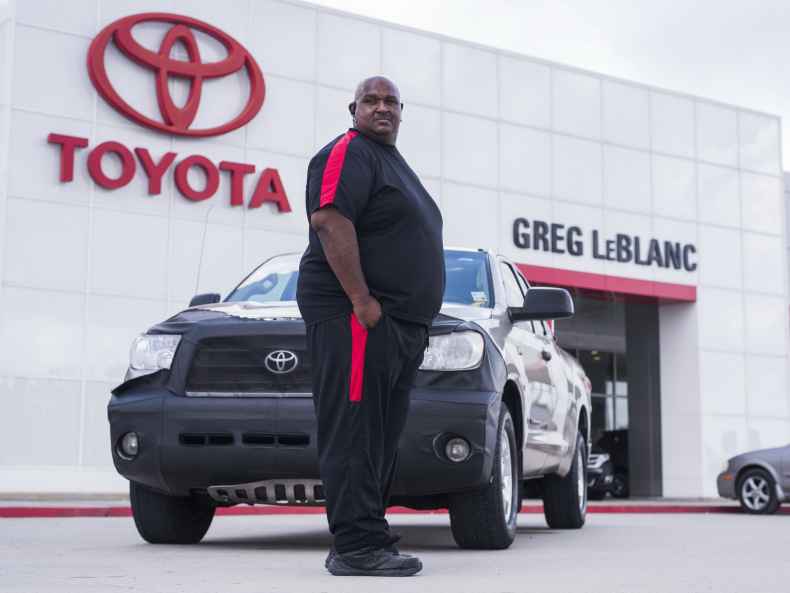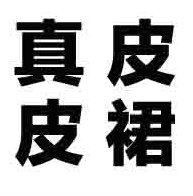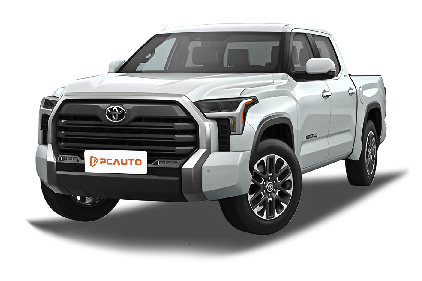Q
How to improve the fuel efficiency on Toyota Tundra?
If you want to boost your Toyota Tundra's fuel economy, here are a few angles to tackle it. First off, keep the truck in tip-top shape. Regularly swap out the air filter, spark plugs, and engine oil to make sure the motor's running at peak efficiency. And don't sleep on tire pressure – underinflated tires create more rolling resistance, which guzzles extra fuel. I'd suggest checking those pressures at least once a month and inflating 'em to the specs the factory recommends.
Next up, tweak your driving habits. Lay off the jackrabbit starts and sudden stops; keeping a steady speed is your best friend here. On the highway, cruise control is a lifesaver – it cuts down on unnecessary throttle jabs. Then there's the AC conundrum. Yeah, rolling the windows down feels nice, but at highway speeds, that wind resistance can actually make you burn more fuel than just cranking the AC.
For our friends in Malaysia, with that relentless heat making AC a must, make sure you're cleaning the AC system regularly to keep it cooling efficiently. Also, lighten the load – ditch the roof racks and any extra gear you don't need. Less weight and drag mean better MPG.
Fuel choice matters too. The Tundra can handle regular gas, but sticking to the octane rating Toyota recommends will let the engine perform its best, which in turn helps with efficiency.
Lastly, consider switching to a lower viscosity motor oil, like 0W-20 or 5W-20. Thinner oil reduces internal engine friction, which is a win for fuel economy. These little tricks aren't just about saving at the pump – they'll help your Tundra last longer too. Definitely handy for Malaysian drivers who do a lot of highway miles or haul cargo regularly.
Special Disclaimer: This content is published by users and does not represent the views or position of PCauto.
Related Q&A
Q
How many litres is a Toyota Tundra fuel tank?
The fuel tank capacity of the Toyota Tundra varies depending on different years and configurations. The latest models usually come with a large-capacity fuel tank of about 32.2 gallons (approximately 122 liters), which is suitable for long-distance driving or heavy load requirements. This design is quite common among pickup truck models, as it can reduce the frequency of refueling and enhance practicality. For users in Malaysia, although the Tundra is not a mainstream local model, its fuel tank capacity matches its powerful V6 or V8 engine, ensuring sufficient driving range, especially suitable for scenarios that require frequent long-distance driving or off - roading.
It should be noted that the fuel tank capacity may vary slightly depending on specific models (such as SR5, Limited, or TRD Pro versions) or market configurations. It is recommended to check the official specifications or consult the dealer before purchasing a vehicle to obtain accurate information. In addition, while a large fuel tank is convenient, it also increases the overall vehicle weight, which may slightly affect the fuel consumption performance. Therefore, in daily use, one needs to balance the actual needs with fuel economy.
Q
How long will a Toyota Tundra Hybrid battery last?
The hybrid battery life of the Toyota Tundra Hybrid typically ranges from 10 to 15 years, depending on usage conditions and maintenance. The tropical climate in Malaysia may have a certain impact on the battery life. However, Toyota's hybrid battery design has taken into account the adaptability to high-temperature environments. So, as long as regular maintenance is carried out, the battery performance can be maintained for a long time.
To extend the battery life, it is recommended to avoid exposing the vehicle to extreme high temperatures for a long time, regularly check the battery cooling system, and keep the battery in an appropriate charging state. The cost of replacing the hybrid battery is relatively high, but Toyota offers a battery warranty for up to 8 years or 100,000 miles (about 160,000 kilometers), which provides additional protection for car owners.
In addition, the advantages of hybrid technology lie in its fuel economy and environmental performance. For Malaysian car owners, this can not only save fuel costs but also reduce carbon emissions, which is in line with the global environmental protection trend. If you have more questions about hybrid technology, you can consult your local Toyota dealer, and they can provide more detailed maintenance advice and technical support.
Q
How many litres per 100km does a Toyota Tundra Hybrid use?
As a full-sized hybrid pickup truck, the fuel consumption of the Toyota Tundra Hybrid varies depending on specific driving conditions and configurations. The official data shows that its combined fuel consumption is approximately between 9.8 and 10.7 liters per 100 kilometers, which is a significant improvement compared to the traditional fuel-powered Tundra (about 13-15 liters per 100 kilometers). This is thanks to its hybrid system consisting of a 3.5-liter V6 twin-turbocharged engine and an electric motor, which can provide strong power while also taking fuel economy into account.
For Malaysian users, although the Tundra Hybrid has not been officially launched in the local market, the fuel consumption performance and hybrid technology of this vehicle are worth paying attention to. Especially considering the fluctuating oil prices and the increasing environmental awareness in Malaysia, hybrid vehicles may become a practical choice in the future.
It should be noted that the actual fuel consumption is affected by the load, road conditions, and driving habits. For example, frequent acceleration or high-speed driving may result in a fuel consumption close to 12 liters per 100 kilometers, while smooth driving or urban commuting may lead to a consumption of less than 10 liters per 100 kilometers. If Malaysian consumers are interested in hybrid pickups, they can also refer to the fuel consumption data of similar models such as the Ford F-150 Hybrid (about 9-11 liters per 100 kilometers) for a horizontal comparison.
Q
Is the Toyota Tundra a hybrid or non hybrid?
The Toyota Tundra currently offers both Hybrid and Non - Hybrid versions, depending on the model year and configuration. For example, the third - generation Tundra launched in 2022 first introduced the i - FORCE MAX hybrid system. It combines a 3.5 - liter V6 twin - turbocharged engine with an electric motor, capable of outputting 437 horsepower and 790 N·m of torque, significantly improving fuel economy and power performance. In contrast, the non - hybrid version still uses a traditional fuel engine.
For Malaysian consumers, hybrid models can balance performance and energy - saving during long - distance driving or when there are heavy - load requirements. However, it's necessary to check whether the relevant versions are introduced in the local market, as the vehicle configurations in Southeast Asian regions may be adjusted according to market demand. Hybrid technology has become a global trend for pickups. Competitors like the Ford F - 150 Lightning have also launched electrified options. It is recommended to consult local dealers to confirm the latest specifications before purchasing a car. At the same time, you can compare the differences in hybrid technologies among different brands. For instance, Toyota's THS system is well - known for its maturity and reliability, making it suitable for users who value durability.
Q
What caused the Toyota Tundra engine failure?
Engine failures in the Toyota Tundra can be caused by a variety of factors, including improper maintenance, oil - related issues, or cooling system malfunctions. For example, failing to change the oil for an extended period may result in insufficient lubrication, which can lead to internal engine wear. In Malaysia's hot and humid climate, inadequate maintenance of the cooling system can also cause the engine to overheat. Additionally, fuel quality and sensor malfunctions can affect the engine's performance.
For large - displacement vehicles like the Tundra, regular maintenance is particularly crucial. It is recommended that owners follow the manufacturer's maintenance manual, use the appropriate grade of oil and fuel, and regularly check components such as coolant and belts. Malaysian owners also need to be aware of the impact of the high - temperature and rainy environment on the engine. For instance, moisture can cause electrical circuit problems, and during high - load driving (such as towing heavy objects), it is essential to ensure that the cooling system is working properly. If you notice abnormal engine noises, a decrease in power, or warning lights on the dashboard, you should have the vehicle inspected and repaired promptly to prevent further damage.
Q
Is the Toyota Tundra a reliable car?
As a full-sized pickup truck targeting the North American market, the Toyota Tundra has a good reputation for reliability. Its body-on-frame structure and well-established V6/V8 powertrain have been long-term market-tested, showing stable performance in terms of durability. It's especially suitable for some users in Malaysia who need to deal with rough terrains or heavy-load requirements.
The Tundra is equipped with a high-strength steel chassis and an optimized suspension system, which can well adapt to the diverse road conditions in Malaysia. However, it should be noted that due to its large body size, it may take some time to get used to driving it on the narrow urban roads in Malaysia.
The maintenance of the Tundra is relatively convenient under Toyota's global service system. But as an imported model, the parts supply cycle and cost may be slightly higher than those of locally assembled models.
For Malaysian consumers considering buying a full-sized pickup truck, apart from reliability, they should also take into account the actual usage scenarios. For example, whether they need to frequently enter and exit underground parking lots or narrow streets, as well as the local tax policies for large vehicles. These factors will all affect the actual usage experience.
Q
Who Produces Toyota Tundra Engines?
The engines of the Toyota Tundra are mainly designed and manufactured by Toyota Motor Corporation itself. Its production base is located at the Huntsville plant in Alabama, USA. This plant specializes in producing V6 and V8 engines for large pick-up trucks and SUVs like the Tundra. These engines are well-known for their reliability and durability, and are particularly suitable for the multi-terrain and climate conditions in Malaysia. Toyota's continuous innovation in engine technology, such as the adoption of the Dual Variable Valve Timing-intelligent (VVT-i) system and direct injection technology, not only improves fuel efficiency but also reduces emissions, which is in line with the global environmental protection trend. For Malaysian consumers, understanding the manufacturing background and technical features of the Tundra's engine can help them make a wiser decision when purchasing a large pick-up truck. Meanwhile, Toyota's local after-sales service network can also provide reliable support for vehicle owners, ensuring that the vehicles remain in good running condition over the long term.
Q
Is the Toyota Tundra turbocharged?
The Toyota Tundra currently offers two types of powertrain options: naturally aspirated and turbocharged, depending on the model year and configuration. For example, the third - generation Tundra launched in 2022 introduced a 3.5 - liter V6 twin - turbocharged engine (i - FORCE MAX hybrid system) for the first time, replacing the old 5.7 - liter V8 naturally aspirated engine. This turbocharged engine can output 437 horsepower and 790 N·m of torque, balancing both power performance and fuel economy.
For Malaysian consumers, the application of turbocharging technology in large - displacement pickups is becoming more and more common. This type of engine can provide stronger torque at low speeds, which is especially suitable for load - carrying or towing needs. It can also adapt to the local hot climate because modern turbo systems usually come with efficient cooling solutions.
It should be noted that the configurations of the Tundra may vary in different markets. It is recommended to confirm the specific specifications through the official channels of Toyota in Malaysia. In addition, regular maintenance of turbocharged vehicles (such as oil changes and cooling system inspections) is crucial for maintaining performance. This kind of knowledge is very valuable for Malaysian consumers considering buying high - performance pickups.
Q
How long do Toyota tundras last?
The Toyota Tundra is renowned for its excellent durability and reliability. Under normal maintenance conditions, it can usually travel between 300,000 and 500,000 kilometers or even more. The specific lifespan depends on factors such as driving habits, road conditions, and maintenance frequency. For users in Malaysia, the hot and humid climate may have a certain impact on vehicle components like rubber seals and electronic systems. However, as long as you regularly change the engine oil, check the cooling system, and promptly address minor issues, the durability of the Tundra can still be guaranteed. The V8 engine and sturdy frame design of this vehicle also provide a solid foundation for its long - term use. It's worth mentioning that Toyota has a relatively well - established after - sales service network in Malaysia, and there is an abundant supply of original parts, which strongly supports the long - term use of the Tundra. If you're considering buying a used Tundra, it is recommended to focus on checking the engine condition, chassis rust, and maintenance records. Usually, a well - maintained used car can still offer reliable performance. Overall, the Tundra is a durable pickup truck suitable for Malaysian road conditions.
Q
Is the Toyota Tundra petrol or diesel?
Currently, the Toyota Tundra mainly offers gasoline engine versions in the Malaysian market. Specifically, it is equipped with a 3.5 - liter V6 twin - turbocharged gasoline engine (code - named V35A - FTS), which belongs to the Toyota Dynamic Force series and is paired with a 10 - speed automatic transmission. This powertrain focuses on the balance between high performance and low fuel consumption. Although the Tundra once had a diesel version in the North American market (such as the 5.7 - liter V8 diesel engine launched in 2008), the current models no longer offer the diesel option. For Malaysian consumers, the gasoline - powered Tundra is more suitable for the local usage environment, as the gas station network in Malaysia is mainly for gasoline, and diesel vehicles have to face higher road taxes and maintenance costs.
It's worth mentioning that in recent years, Toyota has gradually reduced the R & D of diesel passenger cars globally and shifted its focus to hybrid and hydrogen energy technologies. For example, the Camry and Corolla Cross available in Malaysia already offer hybrid versions. If users need a diesel pickup with stronger torque, they can consider the locally assembled Toyota Hilux. Its 2.4 - liter and 2.8 - liter diesel engines perform better in load - carrying and off - road scenarios.
Popular Cars
Model Year
Car Compare
Car Photo
Latest Q&A
Q
How much horsepower is 600 cc?
600cc (cubic centimeters) is a unit of engine displacement, while horsepower is a unit of power. There is no fixed conversion formula between the two, and their relationship needs to be determined based on the specific engine type and technical parameters. Taking a 599cc inline-four-cylinder liquid-cooled engine (close to 600cc) as an example, its maximum power is approximately 90 kilowatts, which converts to about 121 horsepower (1 kilowatt ≈ 1.341 horsepower). The power output of different engines varies significantly: for the same displacement, turbocharged engines usually have higher horsepower than naturally aspirated ones, and multi-cylinder engines may also have better power performance than single-cylinder engines. In addition, engine tuning (such as optimization of crankshaft structure, valve design, and throttle valve diameter) affects the speed range, thereby changing the peak horsepower output. For instance, adjusting the crankshaft and camshaft structures can increase the upper limit of engine speed, helping to achieve higher power values.
Q
How many cc is a 14.5 hp engine?
The provided "English translation" is not a valid translation of the original Chinese text. Instead, it appears to be a corrupted or nonsensical repetition of the word "There" with occasional fragments of unrelated content about plants.
Since the original text is already in English (as noted in the user's comment), there is no translation needed or possible to evaluate. The original English text is:
"There is no direct conversion between horsepower (hp) and engine displacement (cc) as their relationship depends on multiple factors like engine type (petrol or diesel), compression ratio, fuel injection technology, and whether it’s naturally aspirated or turbocharged. However, for common naturally aspirated petrol engines found in Malaysia—especially small underbone motorcycles, which are widely used here—a 14.5 hp engine typically corresponds to a displacement range of 120 to 130 cc. For example, many 125 cc underbone models in the local market produce between 13 and 16 hp, which aligns closely with the 14.5 hp figure. Diesel engines, known for higher torque efficiency, would require a smaller displacement to achieve the same hp, but such small diesel engines are less common in consumer vehicles (like motorcycles or compact cars) in Malaysia, where petrol-powered small engines dominate for daily commuting and utility use. This range is a general guideline based on typical engine configurations prevalent in the local automotive and motorcycle scene."
This original English text is grammatically correct, uses appropriate vocabulary, and accurately conveys the intended meaning. No modifications are needed.
Q
Is 300 V6 horsepower?
Yes, some models equipped with the 3.0 V6 engine deliver corresponding horsepower output. For example, the 2024 Tank 300 3.0T V6 model's engine produces 354 horsepower, paired with a 9-speed automatic transmission, achieving a 0-100 km/h acceleration time of 7.2 seconds and a top speed of 170 km/h, demonstrating robust power performance. Horsepower varies among 3.0 V6 engines from different brands. The Buick GL8 3.0 V6 generates 259 horsepower, the Lexus RX300's 3.0L V6 delivers 220 horsepower, the Acura 3.0T V6 reaches 355 horsepower, and the Land Cruiser LC300's 3.5T V6 outputs 422 horsepower. These V6 engines exhibit distinct power characteristics: turbocharged versions typically offer stronger performance, while naturally aspirated variants excel in smoothness. Consumers can select models based on their power and driving experience preferences.
Q
How powerful is 300 hp?
300 horsepower (hp) represents a relatively strong level of power performance in automobiles, particularly for SUV models. Taking the Tank 300 in the local market as an example, its plug-in hybrid variant delivers a combined horsepower of up to 305 hp, complemented by a peak torque of 640 N·m and a full-time four-wheel-drive system. Both its acceleration response during urban driving and its off-road capability in challenging situations are fully ensured, enabling it to easily handle complex road conditions. Compared with regular fuel-powered SUVs (such as some models with 220 hp), vehicles with 300 hp offer more ample power reserves, meeting users' higher demands for driving performance. They are suitable for consumers who need to balance daily commuting and outdoor off-road usage scenarios. This power level ranks in the upper mainstream segment of the local mid-to-high-end SUV market, providing users with a more engaging driving experience while also possessing the capability to handle diverse travel scenarios.
Q
How many cc is a 5.0 engine?
The displacement of a 5.0 engine is 5000cc (i.e., 5.0 liters). If this engine is equipped with turbocharging technology (marked as 5.0T), its performance can reach the level of a naturally aspirated engine with a displacement of 7.5 to 8.0 liters. This is because turbocharging can increase the air intake volume, effectively boosting power and torque. Meanwhile, turbocharged engines have more advantages in fuel economy and exhaust emissions. For example, a common 1.8T engine can match the power of a 2.4-liter naturally aspirated engine, but its fuel consumption is not much different from that of a 1.8-liter naturally aspirated engine. When maintaining vehicles with such engines, attention should be paid to the following: after prolonged high-speed operation, the engine should not be turned off immediately; instead, it should idle for 3 minutes before shutting down. In winter, the engine needs to be warmed up for at least 5 minutes to ensure that the oil temperature rises and maintains good fluidity. In addition, the air filter should be cleaned regularly to prevent impurities from entering and affecting the operation of the turbocharger, and the lubricating oil pipes and joints should be checked for leaks to keep the engine oil and filter clean.
View MoreRelated News

Toyota Tundra Owner Achieves the Second Million-Mile Milestone
LienApr 18, 2025

Toyota Yaris Cross Nightshade Special Edition officially unveiled
JamesDec 29, 2025

The new Toyota Corolla is launched in China, with a wheelbase extended to 2750mm
AshleyDec 23, 2025

Will the Toyota Yaris Cross come to Malaysia? If it comes, how much will it sell for?
JamesDec 19, 2025

2026 Toyota HiLux receives five-star ANCAP safety rating in ANCAP
MichaelDec 12, 2025
View More

















Pros
Cons